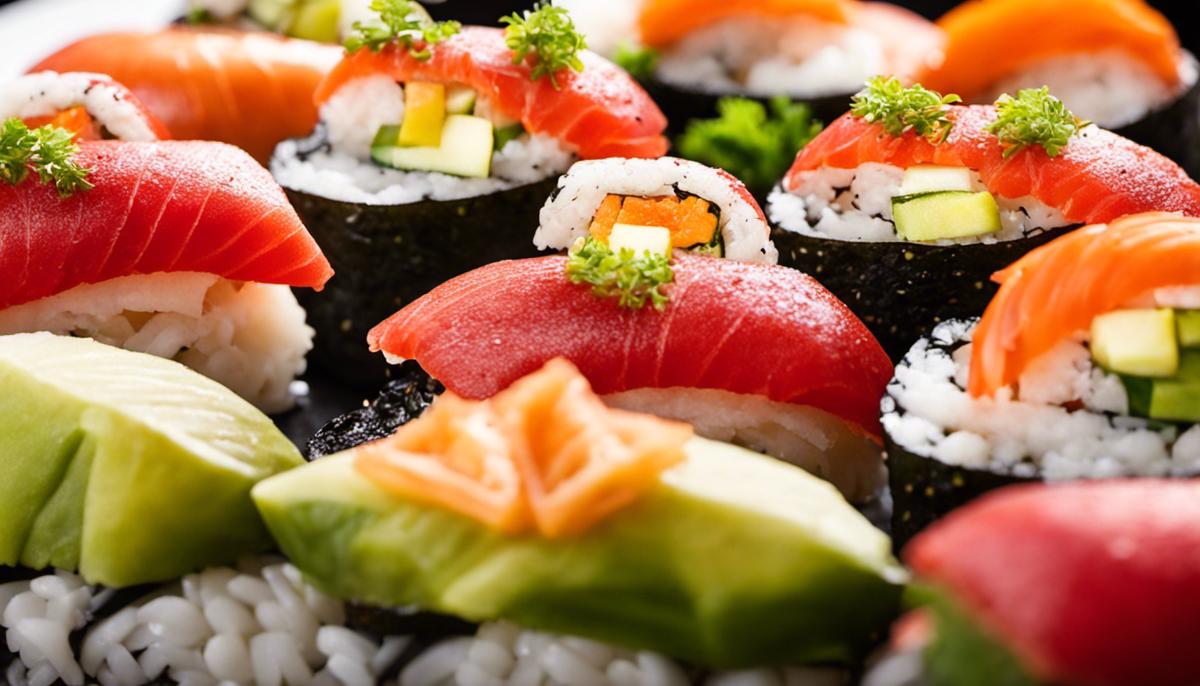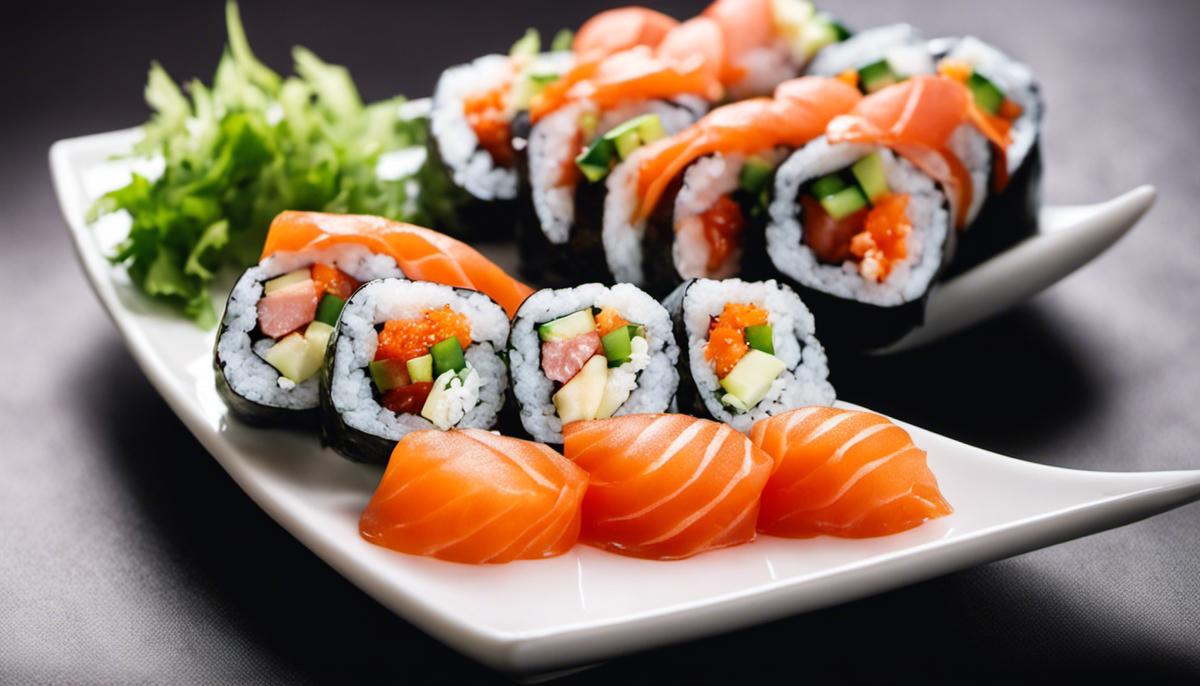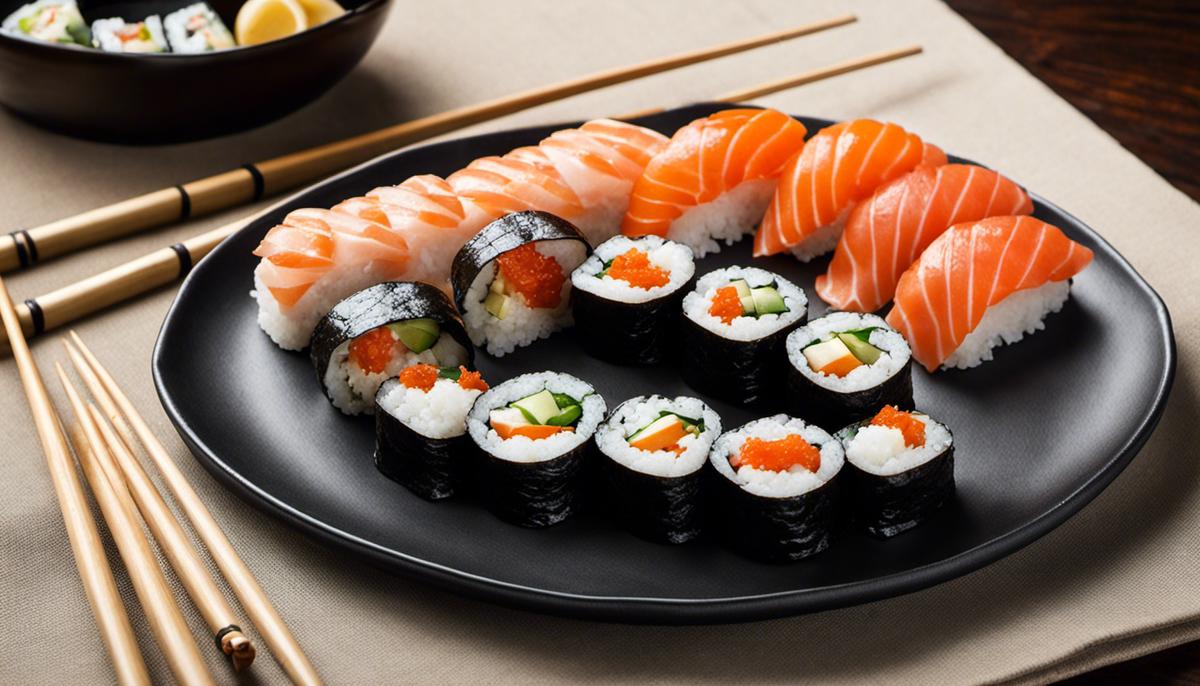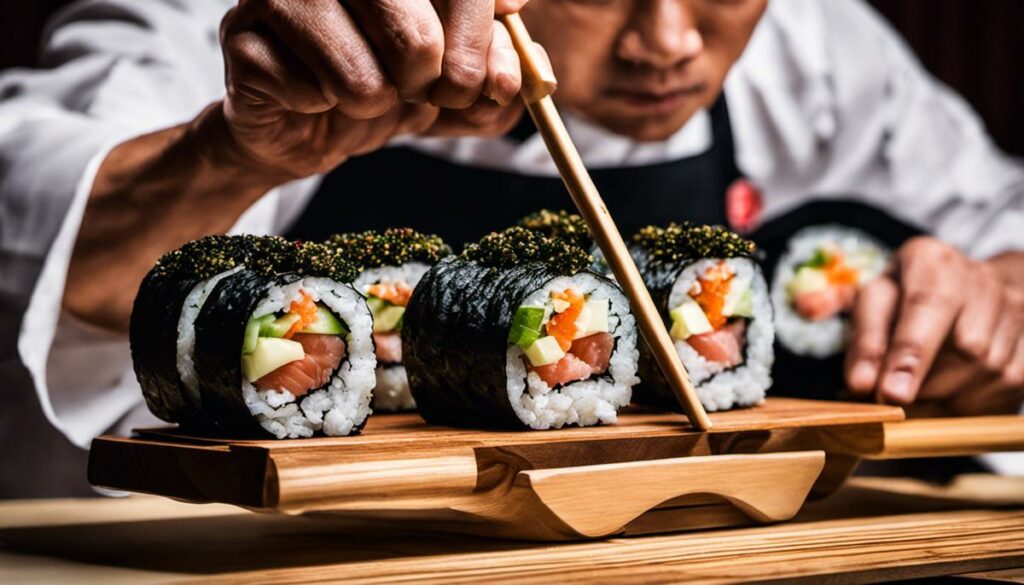In the fascinating world of Japanese cuisine, sushi occupies a special place. More than tender morsels of rice, fish and vegetables, it is an art form in itself that demands both the skill of the sushi chef and expresses deep appreciation for the ingredients. In this discussion, we’ll take a deep dive into the art of sushi rolling, the technique, and the skill required to create the perfect sushi roll. In doing so, we shed light not only on the importance of each individual ingredient, but also on the artistry of rolling to achieve the beauty of the finished product. Furthermore, we look at the role of soy sauce in the backdrop of sushi with its contribution to the nuance and deepening of the flavor profile.
The Art of Sushi Rolling
There aren’t many things as complex yet as simple as rolling sushi. With the best masters of sushi art, every grain of rice, every bite, every movement is a study in perfection. But what is the art behind the perfect sushi roll?
First, prepare the sushi rice. This particular type of rice is at the heart of the perfect sushi and requires special care. It must be washed in cold water until the water is clear, then boiled, and finally seasoned with a special rice vinegar. Good sushi chefs know that the texture and flavor of the sushi rice are just as important as the ingredients that are put on it.
A good sushi roll is balanced. The key is to use the right amount of rice and fillers to ensure that no flavors dominate. Too much rice can drown out the flavor of the other ingredients, while too little diminishes the gastronomic appeal of the roll.
Next to the rice, the biggest secret to the perfect sushi roll revolves around aesthetics. A sushi roll should not only taste good, but also look good. Every ingredient must be neatly arranged and every cut must be executed accurately. It’s almost like a form of meditation: the focus and patience needed with each cut, and the sense of satisfaction when you’ve produced a masterpiece that’s not only delicious, but also visually appealing.
And then there’s the finesse with which the sushi chef holds the knife, the impeccable timing, the precision with which every bite is placed. There is an incredible amount of patience, skill, and care behind every sushi roll – a complex process that seems effortless.
It’s no exaggeration to say that rolling sushi is an art form that will be perfected over time. It takes many years of practice and dedication to get to the point where every roll, every cut, every piece of sushi is just perfect. And just like any other art form, this one requires focus, patience, and a continuous quest for perfection.
To create the perfect sushi roll, chefs need incredible skill, precision, and an eye for detail. They say that all good things take time – and nowhere is this more evident than when rolling sushi. However, if you take the time and take the craft seriously, the reward can be nothing less than gastronomic perfection.
It’s not enough to just be a master chef to make the perfect sushi. You have to be an artist. Keep this in mind the next time you enjoy a sushi roll. A masterfully crafted sushi roll is more than just a meal. It is a culinary painting, carefully composed and lovingly presented. It’s poetry on a plate.

The variety of soy sauce in the sushi world
When you think of sushi, you usually focus on the freshness of the fish or the quality of the rice. But what if we told you that soy sauce, which we often think of as an afterthought, can have a huge impact on the overall taste experience?
First of all, you have to understand that not all soy sauces are created equal. There are, at its core, two main types of soy sauce, known as shoyu and tamari . Although they are similar in some ways, there are significant differences that affect the sushi experience.
Shoyu soy sauce is the most common form found in most Japanese restaurants and supermarkets. It is characterized by its high wheat content and its less intense, saltier taste. This makes it the ideal sauce for most sushi variants, as it does not mask the flavors of the fresh fish, but rather highlights them.
On the other hand, tamari soy sauce has a more intense and fuller flavor because it is made from soybeans and without wheat. This gives the sauce a darker color and flavor, which is why it is often used in more flavorful sushi varieties and sashimi .
But it’s not just the type of soy sauce that makes the difference, it’s also how you use it. One of the basic rules of sushi is that you shouldn’t use too much soy sauce. Less is more. Too high a sauce could cause the delicate flavor of the fish to be lost or cause the rice to soften and fall apart.
So, when you’re planning your next sushi meal, don’t forget to include the soy sauce. It has the potential to greatly enhance your sushi experience and offers another layer of aromatic complexity that is sometimes overlooked. And remember, choosing the right soy sauce requires just as much finesse and understanding as making the sushi itself.
The right soy sauce can make a good plate of sushi truly a great one. Sushi isn’t just about looking good, it’s also about tasting amazing. After all, sushi is both an art form and a culinary delight.

Presentation and aesthetics of sushi and soy sauce
A stylish approach to sushi and soy sauce goes far beyond the general consumption of these delicacies. Rather, it is about an overall understanding of enjoyment and aesthetics, of understanding and accepting Japanese heritage and tradition.
At the heart of every fine sushi presentation and perfect soy sauce outfit lies the art of serving and storytelling in the background. A beautiful sushi arrangement on a minimalist yet artful serving plate can tell stories and outshine words. The collaboration of porcelain, color and form versus the perfection of immaculately tailored nigiri or filigree shapes of the maki is the true essence of the aesthetic we all aspire to.
Soy sauce is not a mere accessory, but a warlike protagonist in the sushi drama. It blends subtly with the rice without ever crossing the domain of the fish or the fine balance of flavors. This is the demanding dance that every sushi lover should take note of and master. Therefore, when choosing soy sauce, you should invest in quality. Soy sauce should be stored in a cool, dark place and used within a year of opening to ensure its optimal flavor.
It’s also important to organize the table in a way that encourages enjoyment: no cluttered table decorations that distract from what’s important. Keep it simple and stylish, use effective color combinations, and make sure the eye isn’t distracted by too much detail.
Don’t forget to use authentic dishes: typically, sushi and soy sauce are served in special porcelain dishes, which are selected just as carefully as the ingredients themselves. It is this dedication to every detail that makes the sushi experience very special.
In the end, it’s about respecting and appreciating the authentic culture and practices behind it. So, let’s make sure we present sushi and soy sauce in a way that upholds their aesthetics, enjoyment, and tradition. We are not only the consumers of these fine foods, but also their keepers. It’s up to us to cherish authenticity, preserve it and pass it on to the next generation. Because at the heart of the sushi experience, it’s all about the details, understanding, and respect.

It is clear that the harmony between sushi and soy sauce is achieved through the fusion of precise technique and aesthetics. It affects not only the taste experience, but also the visual experience of the food. It is therefore essential to appreciate and cultivate the art of sushi rolling and the sensitivity to the use of soy sauce. Sushi is not only a form of food preparation, but it also embodies a deep appreciation and appreciation for the process and traditional Japanese culture. By learning these techniques and concepts, you can gain a deeper understanding of the sushi world and greatly enrich your dining experience.


